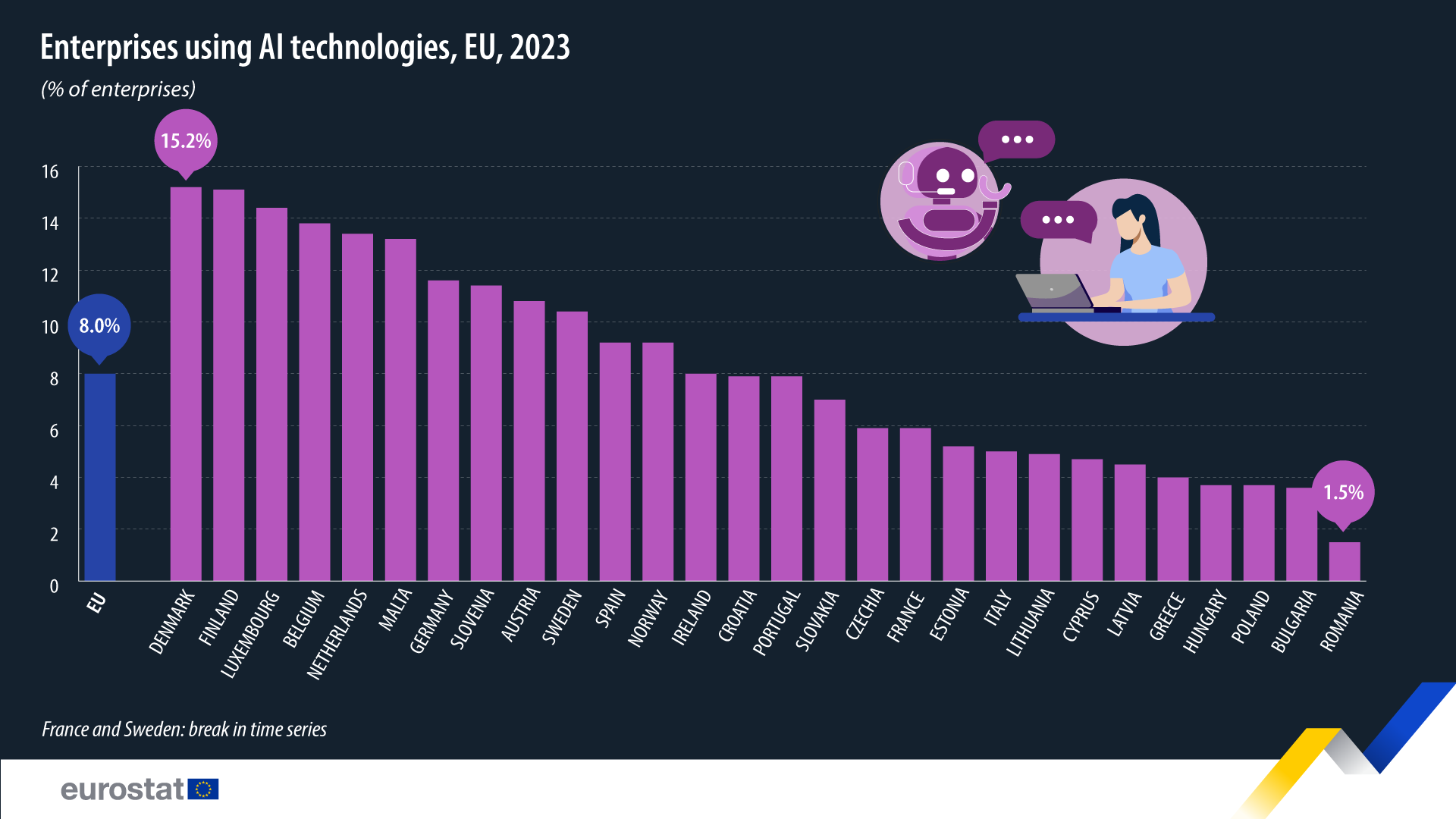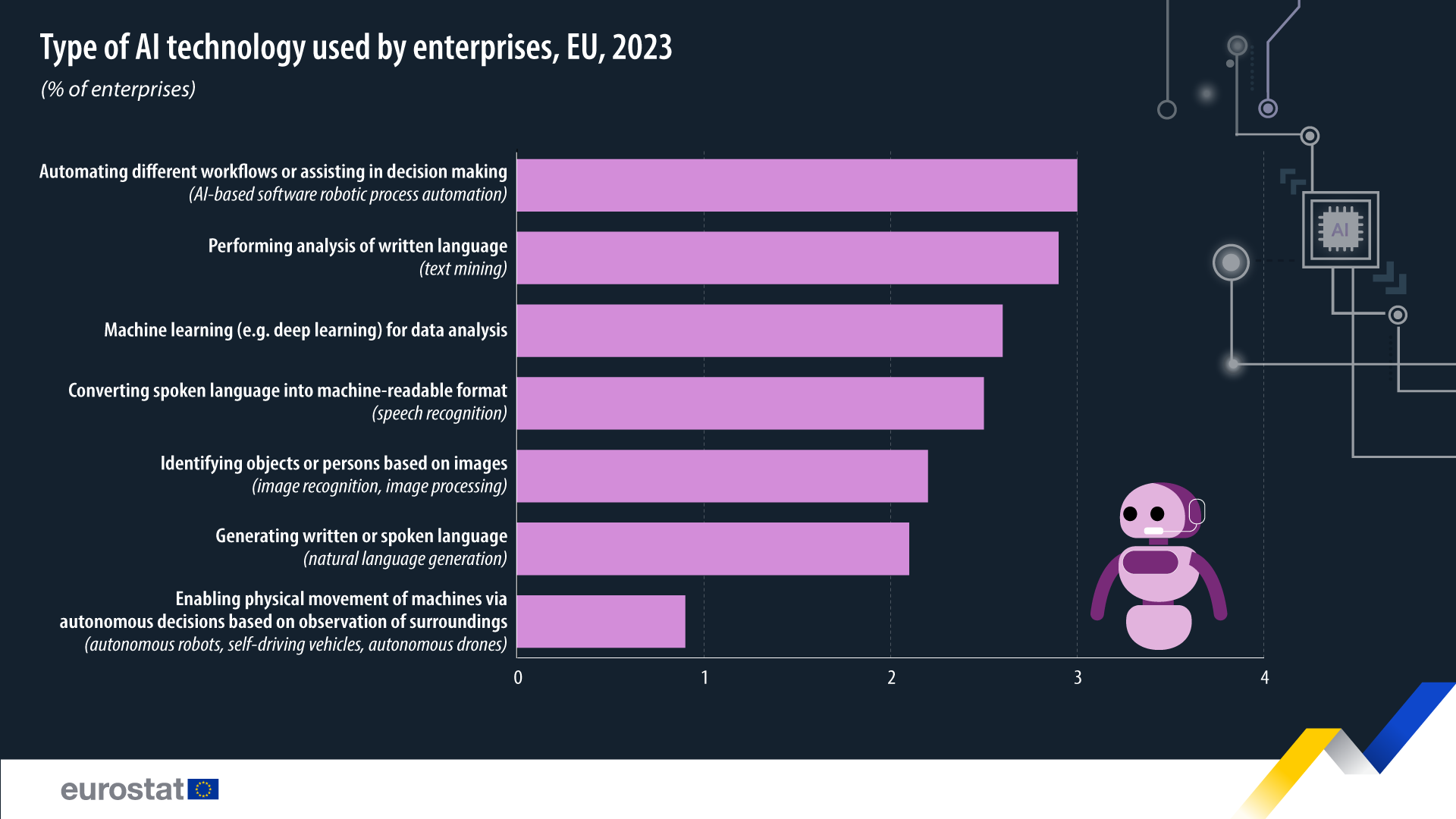8% of EU enterprises used AI technologies in 2023

In 2023, 8% of enterprises in the EU with 10 or more employees used Artificial intelligence (AI) technologies to conduct their business.
This data comes from the newly updated Statistics Explained article on the use of artificial intelligence in enterprises.
Artificial intelligence refers to systems that use technologies such as text mining, computer vision, speech recognition, natural language generation, machine learning and deep learning to gather and/or use data to predict, recommend or decide – with varying levels of autonomy – the best action to achieve specific goals.
The highest shares of enterprises with 10 or more employees using AI technologies were in Denmark (15.2%), Finland (15.1%) and Luxembourg (14.4%). Meanwhile, the lowest shares were recorded in Romania (1.5%), Bulgaria (3.6%) and Poland (3.7%) and Hungary (3.7%).
Source dataset: isoc_eb_ai
When it comes to the type of AI technology used by these enterprises, in 2023, automating different workflows or assisting in decision-making (AI-based software robotic process automation) was the most used, with 3% of the enterprises using it. Performing analysis of written language (text mining; 2.9%) and machine learning (e.g. deep learning; 2.6%) followed.
Source dataset: isoc_eb_ai
Other types of AI technologies used include converting spoken language into machine-readable format (speech recognition; 2.5% of the enterprises), identifying objects or persons based on images (image recognition, image processing; 2.2%), generating written or spoken language (natural language generation; 2.1%) and enabling physical movement of machines via autonomous decisions based on observation of surroundings (autonomous robots, self-driving vehicles and autonomous drones; 0.9%).
For more information
- Statistics Explained article on use of artificial intelligence in enterprises
- Thematic section on digital economy and society
- Database on digital economy and society
- Digitalisation in Europe - 2024 edition
Methodological notes
- Enterprises using Artificial intelligence refer to the following AI technologies:
- technologies performing analysis of written language (text mining)
- technologies converting spoken language into machine-readable format (speech recognition)
- technologies generating written or spoken language (natural language generation)
- technologies identifying objects or persons based on images (image recognition, image processing)
- machine learning (e.g. deep learning) for data analysis
- technologies automating different workflows or assisting in decision making (Al-based software robotic process automation)
- technologies enabling physical movement of machines via autonomous decisions based on observation of surroundings (autonomous robots, self-driving vehicles, autonomous drones)
- Machine learning (e.g. deep learning) involves ‘training’ a computer model to better perform an automated task, e.g. pattern recognition.
- Natural language processing, natural language generation or speech recognition are the ability for a computer program to understand human language as it is spoken, to convert data into natural language representation or to identify words and phrases in spoken language and convert them to a machine-readable format.
- France and Sweden: break in the time series due to the implementation of the statistical unit enterprise.
- Data come from the 2023 EU survey on ICT usage and e-commerce in enterprises and refer to all enterprises with at least 10 employees or self-employed persons (classified in NACE Rev. 2 sections C to J, L to N and group 95.1). Further methodological information related to the survey can be found here.
- EU enterprises: at least 10 employees and self-employed persons.
If you have any queries, please visit our contact us page.


